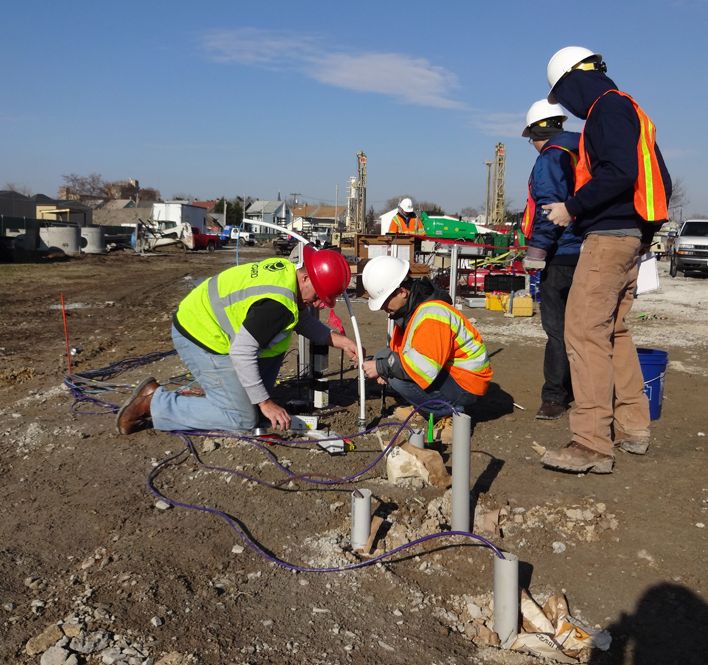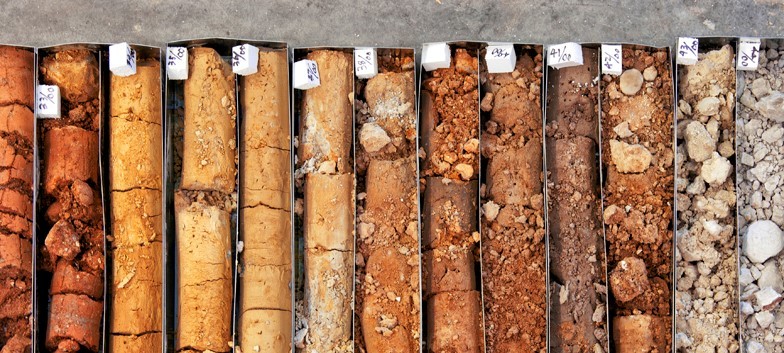Civil Geotechnical Engineering Solutions for Commercial and Residential Projects
Civil Geotechnical Engineering Solutions for Commercial and Residential Projects
Blog Article
Exploring the Essential Function of Consulting Engineers in Geotechnical Projects: A Comprehensive Overview of Their Contributions and Duties
Consulting designers offer as critical numbers within geotechnical tasks, entrusted with the complex duties of examining subsurface problems and guaranteeing the architectural stability of building and constructions. As we explore the complex contributions of consulting engineers, it ends up being evident that their involvement is important to browsing the difficulties inherent in geotechnical undertakings.
Overview of Geotechnical Engineering
Geotechnical engineering is a vital discipline within civil engineering that concentrates on the actions of planet materials and their interaction with structures. This area incorporates the research of soil, rock, groundwater, and the technicians controling their homes and behaviors. Geotechnical engineers examine the physical and chemical homes of these products to identify their viability for different construction projects, making certain that structures are founded on stable and reputable ground.

Moreover, geotechnical designers should think about ecological aspects, such as dirt contamination and groundwater management, to promote sustainable growth. Their know-how is necessary in maximizing the design and building processes, eventually adding to the longevity and security of civil design jobs.
Key Duties of Consulting Engineers

In addition, they are responsible for creating style criteria and requirements that comply with regulatory requirements and ideal techniques. This includes assessing site problems and establishing suitable building methods, which is critical for minimizing dangers connected with ground instability.
Consulting designers also act as intermediaries in between different stakeholders, consisting of clients, service providers, and regulatory bodies, assisting in clear communication and cooperation throughout the project lifecycle. consulting civil engineering companies. Moreover, they supply skilled assistance throughout construction, guaranteeing that geotechnical facets are appropriately attended to and that any unexpected difficulties are handled efficiently. Eventually, the complex duties of getting in touch with designers are essential to the stability and success of geotechnical tasks, influencing both safety and sustainability in building practices
Website Evaluations and Investigations
A detailed website assessment is essential for understanding the subsurface problems that affect geotechnical jobs. Consulting engineers play a critical role in performing these analyses to ensure the safety and viability of construction tasks. This process typically includes a series of examinations, consisting of soil tasting, borehole exploration, and geophysical surveys, to collect critical data on soil properties, groundwater degrees, and the geological context of the website.
Engineers assess the acquired information to identify the possible obstacles presented by the subsurface problems, such as soil instability or high groundwater degrees, site which can affect the design and execution of the task. In addition, website analyses aid in try this evaluating the visibility of contaminants, which is essential for environmental conformity and making certain public safety and security.
Moreover, seeking advice from engineers coordinate with multidisciplinary groups to incorporate findings from site examinations into wider task objectives. Through rigorous documents and reporting, they provide vital understandings that inform stakeholders concerning the viability of the site for proposed growths. Ultimately, the thoroughness of site analyses lays the foundation for reliable planning and engineering solutions, mitigating risks associated with unforeseen subsurface problems.
Style and Danger Management
After conducting comprehensive site analyses, speaking with engineers concentrate on the layout and risk management aspects of geotechnical projects. This stage is vital as it guarantees that the engineered remedies are not just effective yet likewise secure and sustainable (consulting civil engineering companies). Engineers use their know-how to create styles that address the certain geotechnical conditions identified during the site evaluations, consisting of dirt homes, groundwater habits, and possible hazards
Threat management is important to this process, as it involves identifying, get redirected here assessing, and mitigating possible dangers linked with the job. Designers employ numerous analytical methods and modeling techniques to predict the habits of soil and rock under various loading problems. By assessing uncertainties and possible failing modes, they can recommend style adjustments that enhance security and decrease threat.
Moreover, seeking advice from engineers make sure compliance with pertinent codes and requirements, which are crucial for reducing responsibilities. They also prepare contingency plans to resolve unexpected difficulties that might emerge during building. Via meticulous style and aggressive threat management, speaking with designers play an essential duty in making sure the safety, performance, and long life of geotechnical projects, inevitably contributing to the overall success of the building venture.
Cooperation With Task Stakeholders
Reliable collaboration with task stakeholders is necessary for the success of geotechnical projects. Consulting designers play a crucial role in helping with interaction amongst various parties, consisting of clients, service providers, regulatory authorities, and ecological specialists. This partnership guarantees that all stakeholders have a clear understanding of project goals, timelines, and potential dangers.
Consulting designers are responsible for incorporating stakeholder input into the style and execution of geotechnical options - consulting civil engineering companies. By proactively engaging with stakeholders, they can determine problems early in the task lifecycle, enabling timely modifications and mitigating possible problems. This proactive method not just cultivates trust however likewise enhances task performance
Furthermore, consulting designers must navigate the intricacies of regulatory compliance, making certain that all geotechnical methods align with lawful and ecological requirements. Their expertise in this location is vital in maintaining open lines of communication with regulatory bodies, thus helping with smoother approvals and permitting processes.
Conclusion

Report this page